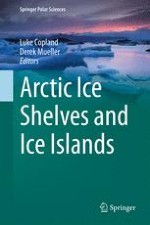2017 | OriginalPaper | Buchkapitel
13. The Military Importance and Use of Ice Islands During the Cold War
verfasst von : William F. Althoff
Erschienen in: Arctic Ice Shelves and Ice Islands
Verlag: Springer Netherlands
Aktivieren Sie unsere intelligente Suche, um passende Fachinhalte oder Patente zu finden.
Wählen Sie Textabschnitte aus um mit Künstlicher Intelligenz passenden Patente zu finden. powered by
Markieren Sie Textabschnitte, um KI-gestützt weitere passende Inhalte zu finden. powered by
